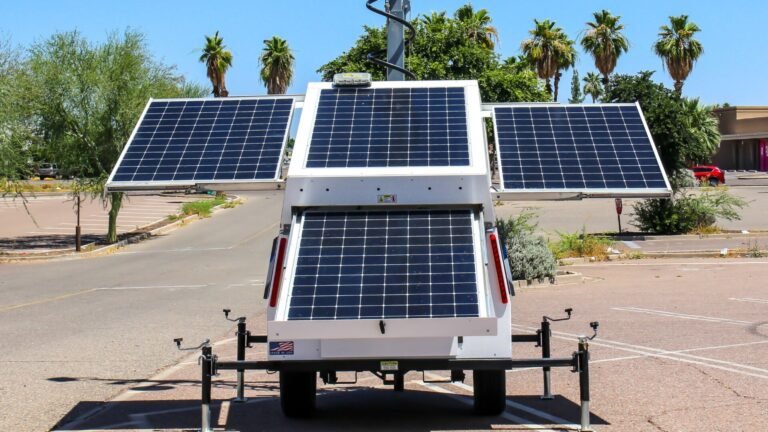The solar power industry is continually evolving, with innovations like bifacial and PERC solar panels leading the charge. Tamesol, as a prominent manufacturer in the solar power industry, is at the forefront of embracing these evolutionary innovations.
Their engagement with advanced technologies, such as bifacial solar panels showcased in their TM Series® HC BIFACIAL, reflects a commitment to leveraging cutting-edge developments like bifacial and PERC solar panels.
By incorporating these technologies, Tamesol is actively contributing to shaping the future of solar energy, aligning with the industry’s direction toward more efficient and effective solar power solutions.
Bifacial Solar Panels
Understanding Bifacial Technology
Bifacial solar panels can capture sunlight from both sides, unlike traditional panels that only use one side. This dual-sided design increases energy generation significantly. These panels are typically installed with a reflective surface beneath or in a way that allows them to capture reflected light from their surroundings.
Benefits of Bifacial Panels
- Increased Energy Yield: Bifacial panels can produce up to 30% more energy than traditional panels under the same conditions.
- Cost-Effectiveness: While the initial investment may be higher, the increased energy yield results in a lower cost per kWh in the long run.
- Versatility: These panels are ideal for a variety of installations, including ground-mounted systems and large solar farms.
- Durability: Bifacial panels often have a longer lifespan as they are usually made with high-quality materials to enable transparency on the rear side.
PERC Solar Panels
The PERC Innovation
PERC technology enhances the efficiency of standard solar cells. It involves adding a passivation layer to the rear of the cell, which allows for better light capture and reduced electron recombination, leading to higher efficiency.
Advantages of PERC Panels
- Higher Efficiency: PERC cells can convert more sunlight into electricity than traditional cells, making them more efficient.
- Better Performance in Low-Light: They perform better in low-light conditions, such as during cloudy days or mornings/evenings.
- Reduced Heat Coefficient: PERC panels have a lower temperature coefficient, meaning their performance decreases less in hot temperatures.
- Flexibility in Application: They are suitable for residential, commercial, and utility-scale solar projects.
Comparative Analysis
While both technologies aim to improve solar panel efficiency, they do so in different ways. Bifacial panels focus on capturing more light, whereas PERC technology works on making the cell itself more efficient at converting light into electricity.
The choice between the two often depends on the installation’s specific requirements, including location, budget, and space constraints.
Integration with Other Technologies
Both bifacial and PERC solar panels can be combined with other emerging technologies, such as solar tracking systems and advanced inverter technology, to enhance efficiency and output further.
Economic and Environmental Impact
Economic Benefits
- Return on Investment: Both technologies offer improved ROI due to higher energy production.
- Market Growth: The adoption of these technologies contributes to the growth of the solar industry, leading to job creation and economic development.
Environmental Impact
- Reduced Carbon Footprint: By generating more power from the same solar installations, these technologies contribute to greater carbon emissions reductions.
- Sustainable Energy Production: They support the global shift towards sustainable energy sources.
Challenges and Future Outlook
Despite their advantages, there are challenges. The higher initial cost of bifacial and PERC panels can be a barrier for some. Moreover, the solar industry must continually adapt to integrate these technologies efficiently into existing power systems.
Looking ahead, the potential for further improvements and cost reductions in both bifacial and PERC technologies is vast. As research and development in these areas continue, we can expect even more efficient and cost-effective solar solutions.
Conclusion
Bifacial and PERC solar panels represent a significant leap forward in solar technology. By embracing these innovations, the solar industry is not only improving efficiency and sustainability but also paving the way for a future where solar energy plays an even more central role in our global energy landscape.
Tamesol’s involvement in developing and manufacturing bifacial solar panels, particularly their TM Series® HC BIFACIAL, exemplifies their commitment to advancing solar technology. Their adoption of these innovative solutions is enhancing the efficiency and sustainability of solar power, aligning with the industry’s trajectory towards a more dominant role of solar energy in the global energy scenario.
As Tamesol continues to embrace and refine these technologies, they are helping to make solar power more appealing and accessible for energy generation worldwide, contributing significantly to the evolving landscape of renewable energy.






